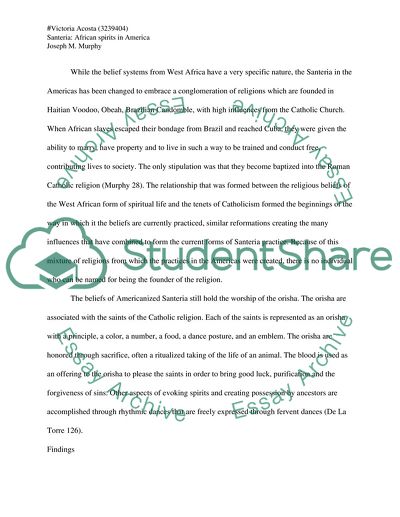Cite this document
(“Santeria - African Spirits in America Research Paper - 1”, n.d.)
Santeria - African Spirits in America Research Paper - 1. Retrieved from https://studentshare.org/culture/1751443-santeria-african-spirits-in-america
Santeria - African Spirits in America Research Paper - 1. Retrieved from https://studentshare.org/culture/1751443-santeria-african-spirits-in-america
(Santeria - African Spirits in America Research Paper - 1)
Santeria - African Spirits in America Research Paper - 1. https://studentshare.org/culture/1751443-santeria-african-spirits-in-america.
Santeria - African Spirits in America Research Paper - 1. https://studentshare.org/culture/1751443-santeria-african-spirits-in-america.
“Santeria - African Spirits in America Research Paper - 1”, n.d. https://studentshare.org/culture/1751443-santeria-african-spirits-in-america.


